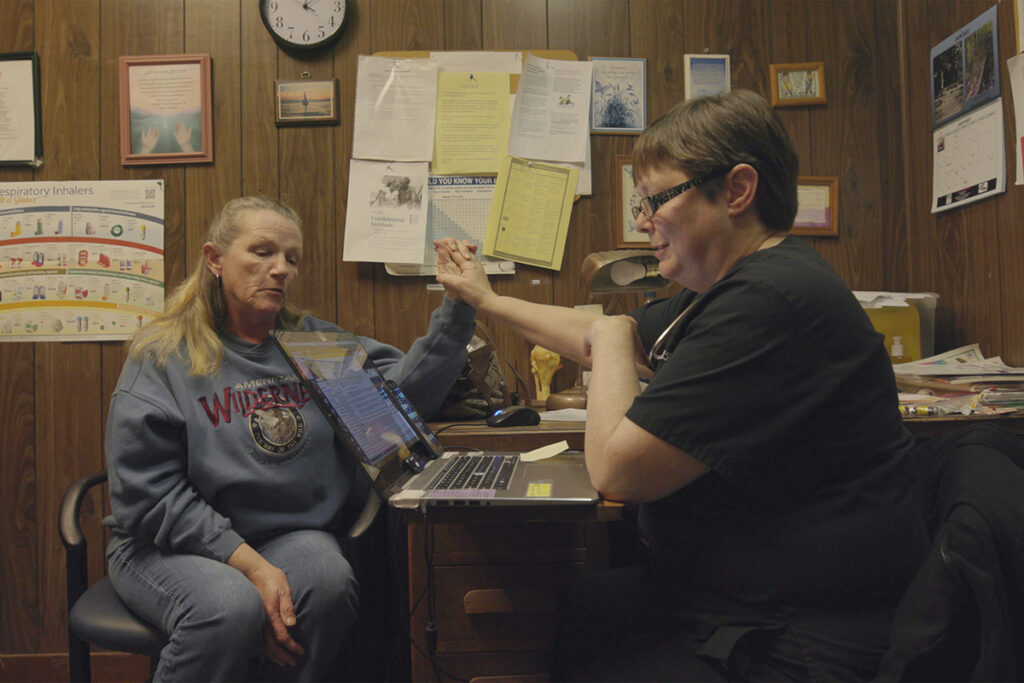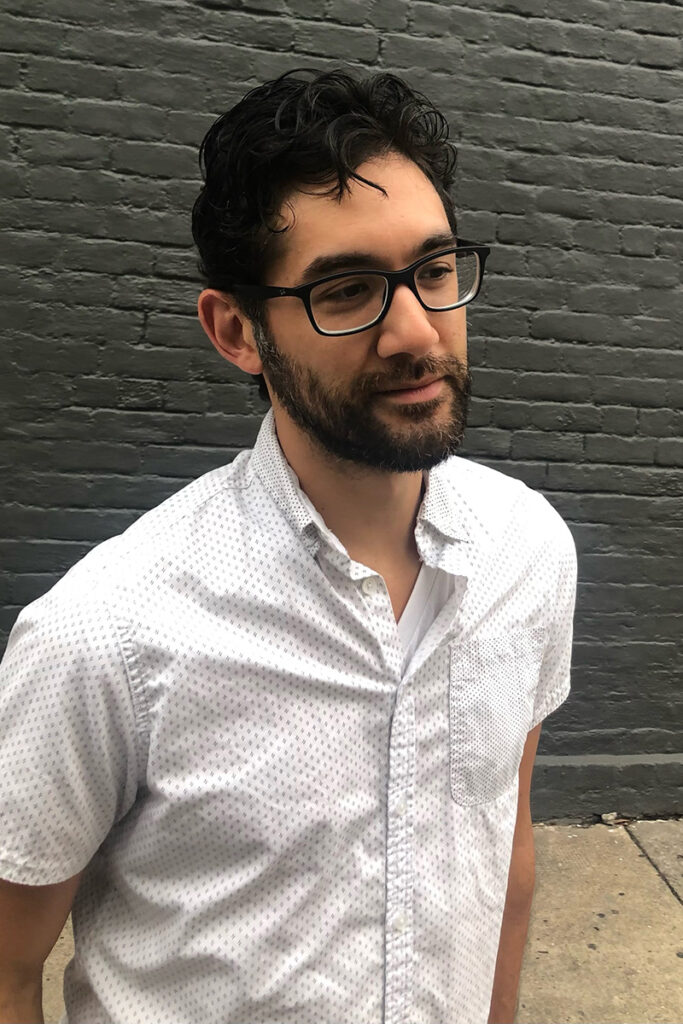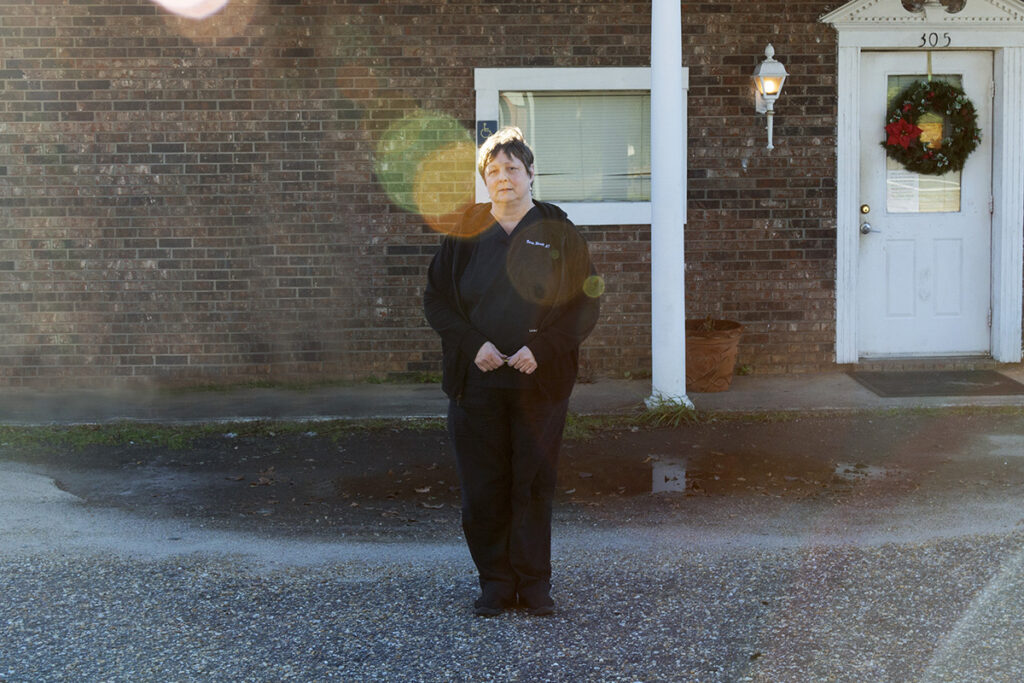Hashiguchi’s ‘The Only Doctor’ Examines Health Care Crisis in Rural Georgia

The roughly 2,800 residents of Clay County, Georgia — a 200-square-mile rural county in the southwest corner of the state – rely on one physician for all of their health care. That physician, Dr. Karen Kinsell, is a full-time volunteer who treats patients regardless of their ability to pay. But that can’t last forever.
The Only Doctor, the latest documentary from Matthew Hashiguchi, MFA ’11, follows Dr. Kinsell and her patients as a university proposes building a fully equipped medical center and Kinsell “makes affordability and access her personal red lines of the potential sale.” The film is having its world premiere Thursday, April 27, at Hot Docs in Toronto, followed by a second screening on May 3.
Hashiguchi’s prior feature doc, Good Luck Soup, about his exploration of his Japanese-American family’s history, was broadcast on PBS World’s America ReFramed, and was part of a transmedia project that included a virtual reality film and an interactive website. Hashiguchi is an associate professor in Multimedia Film and Production at Georgia Southern University.
Emerson Today talked to him about his most recent film and what it says about health care in rural America.

How did you find this story?
The idea for this story began when my wife and I were preparing to start a family. We live in Georgia and in 2018, the state was identified as the worst state to give birth in, its maternal mortality rate was the highest in the country. So it began with me wanting to learn more about pregnancy, to ensure a positive outcome for the birth of our daughter.
Initially, the film was going to focus on maternal mortality, but I quickly realized that I wasn’t the best person to tell that story. I had read an interview with Dr. Kinsell where she talked about rural disparities in not only maternal health, but health outcomes in general, and I called her to learn more. She invited me to come visit her and her patients and that’s how it all began. I just kept returning with a camera, for about three years.
Does this situation happen all over rural America or is Clay County an exception?
Rural regions throughout the United States are suffering from this sort of shortage, but it’s especially problematic in the Southeast because of high poverty rates, racial disparities, unhealthier communities, and the [fact that the] region has largely not adopted Medicaid expansion. Georgia is currently one of 10 states in the U.S. that has not expanded its Medicaid offerings. What makes Dr. Kinsell unique is that she’s a full-time volunteer, and she will treat patients regardless of payment. That does not happen throughout the United States, and should not. We should not have to rely upon a volunteer for medical treatment.
How challenging was getting access to participants, given potentially sensitive conversations and the fact that you were filming during the pandemic?
I first needed access to Dr. Kinsell and a health care setting, and she was very willing to show me her world and to introduce me to her patients. Obtaining access to film within medical environments is very difficult, largely because of HIPAA laws, but Dr. Kinsell is her own boss [and] doesn’t need to ask anyone for permission, other than her patients.
Dr. Kinsell was very supportive of what I was doing and made a strong effort to introduce me to patients, and to ask if they wanted to take part in this documentary. Generally, most patients said yes to filming. Some said no, of course. I think the biggest concern, regarding patient privacy, was knowing when to stop filming or if to film at all. Some patients were in distress, and even though they said yes to filming, I don’t think it was appropriate or ethical to do so, and at times I stopped filming, or filmed from angles that hid their identity.
We stopped filming when the pandemic arrived and the world shut down. Like most people, we were concerned for our health, but also concerned for the health of others. I was traveling to this rural, remote county from Savannah, a larger city, and it was completely possible that I could have brought COVID to this somewhat isolated region that rarely saw outsiders, so there was a lot of concern. My wife and I also just had a baby on March 25, 2020, and we were concerned for the health of our newborn daughter.
But a point came during the summer of 2020 where we felt we needed to continue filming. This was, after all, a public health crisis, and Dr. Kinsell now had to take on the responsibility of advising her community on COVID-19. So I returned to Clay County to film wearing a mask and staying as far away from people as possible. But it was an important moment in the story, as well as the world, and it needed to be documented to show how rural America dealt with the disease. We didn’t want to make it a major focus of the story, and this film is not about COVID-19. But the pandemic did happen, and it just became another health crisis in her community.

When did filming end, and have you kept in touch with Dr. Kinsell and the film’s participants?
Filming lasted from early 2019 to early 2021. I’ve stayed in touch with Dr. Kinsell and we continue to talk with each other. She often sends me things that she does, reads, or learns, and I do the same. Every now and then I send her photos of my two daughters, Isabella and Francesca. When production began, my wife and I were just getting ready to start our family, and by the end of production, I had two daughters. During Zoom conversations with Dr. Kinsell, I would often hold Isabella, so she was able to see her grow in increments. I like to continue sharing my growing family with her because she shared so much of her life with me.
What do you hope audiences take away from the film?
The United States is one of the wealthiest and most powerful countries in the world, and it’s pitiful that in some regions of the U.S., health care is not only inaccessible, but completely absent. Proximity and closeness to a doctor or hospital is certainly part of this problem, but it’s also because many people just can’t afford to pay for it.
To me, this is a story of the American Dream and who has access to it. We like to think that anyone can achieve success and a happy life, but I don’t think that’s true. So, what do we need to do to ensure that everyone in this country has access to the same opportunities and systems of support? I’d like audiences to think about that.
For anyone who can’t make it to Hot Docs, any plans for screening/streaming in the months ahead?
After our world premiere at Hot Docs, we plan to take the film to other festivals, and to also distribute the film through broadcast or streaming. We’re still working on that, but it will make the rounds.
Categories